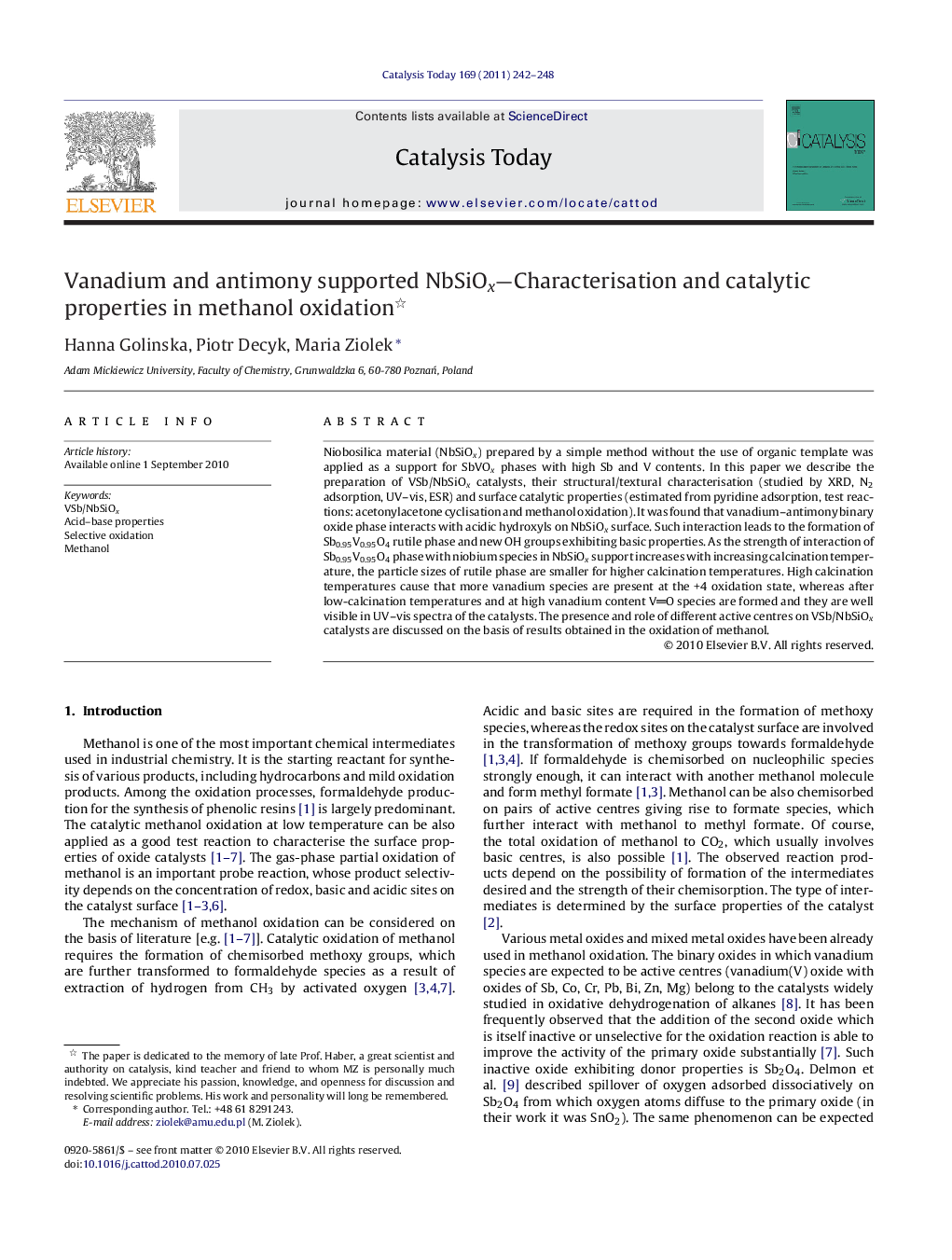| Article ID | Journal | Published Year | Pages | File Type |
|---|---|---|---|---|
| 56064 | Catalysis Today | 2011 | 7 Pages |
Abstract
Niobosilica material (NbSiOx) prepared by a simple method without the use of organic template was applied as a support for SbVOx phases with high Sb and V contents. In this paper we describe the preparation of VSb/NbSiOx catalysts, their structural/textural characterisation (studied by XRD, N2 adsorption, UV-vis, ESR) and surface catalytic properties (estimated from pyridine adsorption, test reactions: acetonylacetone cyclisation and methanol oxidation). It was found that vanadium-antimony binary oxide phase interacts with acidic hydroxyls on NbSiOx surface. Such interaction leads to the formation of Sb0.95V0.95O4 rutile phase and new OH groups exhibiting basic properties. As the strength of interaction of Sb0.95V0.95O4 phase with niobium species in NbSiOx support increases with increasing calcination temperature, the particle sizes of rutile phase are smaller for higher calcination temperatures. High calcination temperatures cause that more vanadium species are present at the +4 oxidation state, whereas after low-calcination temperatures and at high vanadium content VO species are formed and they are well visible in UV-vis spectra of the catalysts. The presence and role of different active centres on VSb/NbSiOx catalysts are discussed on the basis of results obtained in the oxidation of methanol.
Related Topics
Physical Sciences and Engineering
Chemical Engineering
Catalysis
Authors
Hanna Golinska, Piotr Decyk, Maria Ziolek,
